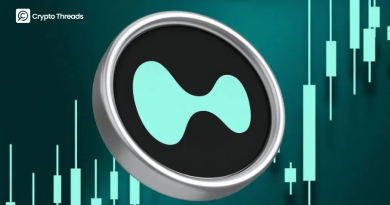Trading Psychology: Secrets to Controlling Emotions in Crypto Trading
All wise traders understand one paramount principle: Their endeavors can fall no matter how much technical analysis they make if their transaction psychology is not consolidated. Emotions not only change the way we see the market and evaluate the chart, but also deeply impact each decision or out of the command. A trader may have all technical analysis knowledge, but if you cannot control psychology, those strategies may become invalid.
This article will help you have an overview and detail about the emotional reason affecting the reading of the chart, introducing techniques to help maintain discipline when trading and outlined practical examples illustrating the impact of psychology on the market.
Why do Emotions Affect Trading Decisions?
When trading, emotions are always present and can change the way we process information. When the human brain is dominated by emotions, it often loses the rational ability needed to analyze data objectively. This directly affects the ability to read charts, identify support and resistance levels, and thereby distorts market trend predictions.
For example, when the price of a currency spikes, the fear of missing out (FOMO) flares up, causing traders to rush to buy, despite analytical data showing that the trend may reverse. Conversely, during times of sharp market declines, the emotions of fear, uncertainty, and doubt can cause traders to sell assets without carefully checking the charts, resulting in missed opportunities for price recovery.
In addition, greed and overconfidence can also distort the way we evaluate the market. When the market is in an uptrend, many traders hope that the price will continue to climb and refuse to take profits. They often think that if they do not hold the position, the profit will not reach the maximum level. However, this action not only causes them to miss the opportunity to preserve profits but also easily leads to risks when the market suddenly reverses. On the contrary, the fear of loss can prevent some people from entering orders even though the chart and indicators have given clear buy signals. All of these factors show that emotions can negatively affect data analysis and objective trading decisions.
How to Control Emotions when Making Decisions
Build and Comply with a Clear Transaction Plan
A detailed trading plan is the right way to guide all your decisions in the volatile cryptocurrency market. The construction of a plan not only includes determining the input, profit and hole cutting points, but also must be accompanied by prevention strategies for unexpected situations. Before entering the command, you need to rely on technical indicators and basic analysis to determine the right time and price. A good trading plan helps you eliminate temporary emotional decisions, helping you avoid errors due to panic or too confident. At the same time, when the market fluctuates strongly, the trading plan will help you recognize the deviations early compared to the original strategy and allow you to adjust in time, protect investment capital and optimize profits. In addition, the establishment of backup scenarios for the worst cases not only increases the initiative but also helps you to be more confident in the face of unforeseen events. Consider the trading plan as an “overall strategy” that you need to follow seriously to ensure that each transaction is done according to a certain standard, instead of being dominated by emotions.
Use Data instead of Feeling
Instead of relying on personal feelings or rumors that have not been verified, the use of data and technical indicators has been verified as one of the most effective ways to make an accurate transaction decision. The use of analytical tools such as dynamic average (SMA, EMA), RSI or MACD index not only helps you get an objective view of market trends but also provide detailed information about price fluctuations and trading volume. Moreover, comparing the chart on many different time frames – such as 1 hour, 4 -hour chart, and 1 day – helps you have a multi -dimensional view of the general trend of the market and discover valuable trading signals.
When you focus on the authentic data, you will minimize the impact of emotions such as panic or too confident, thereby avoiding hasty and inaccurate decisions in hasty situations. Data priority helps you build a solid trading platform, where each decision is made based on objective factors and verified analytical tools, instead of just based on temporary feelings.
Apply Risk Management Principles
Risk management is especially important when trading around psychological levels due to the volatility of prices. You can use psychological levels as a benchmark:
- Support: Enter near the support level and place a stop loss just below it to minimize risk if the price suddenly drops.
- Resistance: Sell or short near the resistance level to protect capital when the price tends to reverse.
Position size is also important: open larger positions when the trend is clear and smaller when the market is volatile. Combining psychological levels with technical analysis and fundamental understanding creates a comprehensive trading strategy that increases the chances of success.
Record and analyze the transaction diary
Maintaining a detailed trading diary is a valuable habit that helps you track, analyze and draw lessons from past transactions. In the trading diary, you need to fully record information such as the time of entry, order, indicators and analytical tools used, as well as your emotional state in each transaction. This not only gives you an overview of your trading performance, but also allows you to identify negative emotions such as panic, too confident or fear of losses that have affected the transaction decision. Over time, reviewing and analyzing the transaction diary will help you draw many valuable lessons, thereby adjusting the trading strategy to be more appropriate and improving the ability to control emotions. A carefully maintained trading diary will help you realize the errors and points that need to be improved, thereby making your transaction process more scientific and effective.
Examples illustrating the impact of psychology on the Market
Bitcoin bubble in 2017 and later collapse
In 2017, Bitcoin price skyrocketed unprecedentedly, creating a strong FOMO wave that made countless new investors buy in the hope of quickly getting rich. The enthusiasm and greed have made many people unknowingly profit when the price reaches nearly $ 20,000, even some people borrow to increase investment capital. However, at the beginning of 2018, Bitcoin price began to decrease and Fud (fear, uncertainty, suspicion) spread due to negative news, causing investors to panic and the market collapsed quickly. The Bitcoin price chart at that time showed that the stage of the parabola price increased by fomo, followed by a fierce collapse when Panic Selling broke out.
Elon Musk’s tweet’s influence on Dogecoin price
In 2021, the positive tweets of Elon Musk on Dogecoin – a Meme Coin – created a fomo fever in the community. Many investors, especially new people, quickly bought Dogecoin in the hope that the price would “go to the moon” after only a few tweets. In contrast, when Elon Musk has negative tweets or even been silent about Dogecoin, Fud appeared, causing investors to sell off and Dogecoin prices plummeted. The Dogecoin price chart shows an extremely sensitive fluctuation to Elon Musk’s tweets, clearly demonstrating the dominance of the crowd psychology based on the news and the influence of “celebrities.”
Conclusion
Cryptocurrency trading requires not only technical analysis knowledge but also a challenging psychological battle. Controlling emotions not only helps avoid wrong decisions but also helps build effective trading strategies, protect capital and optimize profits.
Remember, a stable mentality along with trading discipline is the key to sustainable success. No matter how volatile the market is, always stick to your plan and learn from your mistakes to gradually perfect your strategy.



